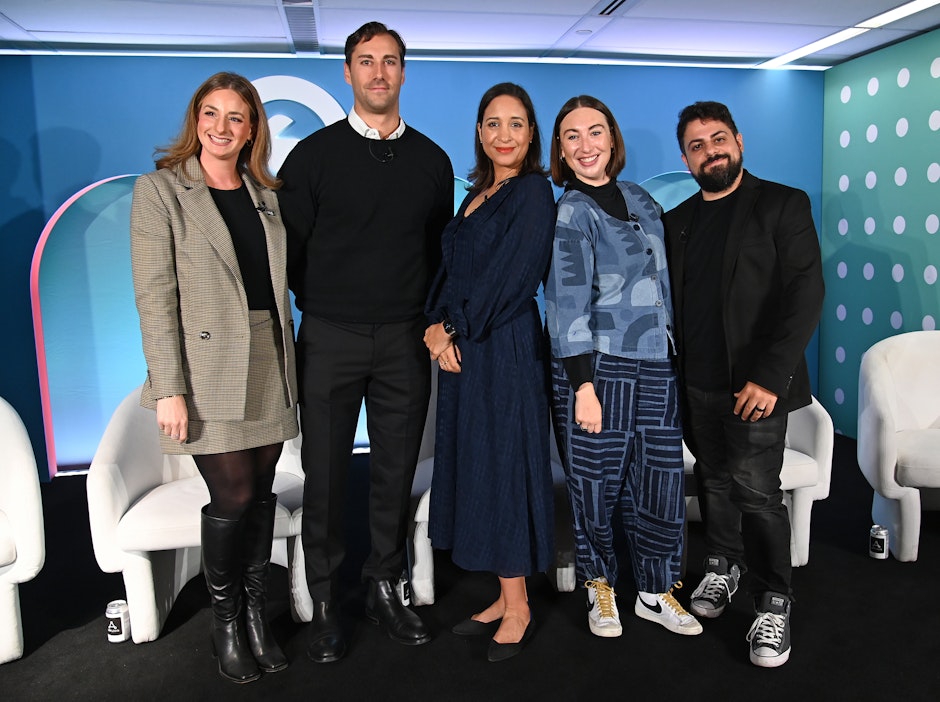3 in-game ad myths debunked at Advertising Week New York
Gaming has seen a significant transformation in the world of advertising

1 - Gaming Isn't Premium
In the past, gaming served as an experimental channel, an uncharted territory that advertisers were just beginning to explore. Thankfully, this has changed. Jackie Lankelis, GM of Global Agency Partnerships at The Trade Desk, outlined that "gaming is no longer new; it’s here". He spoke about how The Trade Desk, IAS, and many other companies are working with Anzu to help make it as easy as possible to not only enter the space but to help advertisers understand what success looks like and to do it in a brand-safe way that makes sense for them.
He also emphasized how “gaming is at a tipping point, and now is the time for brands, agencies, and partners to start having these conversations.” Sarah Stringer, EVP, Head of Innovation & US Media Partnerships at dentsu, said that one of the reasons some advertisers are holding back is because “they worry about gaming not being premium enough.” When they think of gaming, many advertisers think back to the early days where the only games offering ad space were low-quality mobile titles.
Today, brands have access to countless premium experiences, from AAA racers like Dakar Desert Rally to sports hits like Tennis Clash and Golf Clash to immersive simulations like The Sims and SimCity. In-game ads are also no longer constrained to mobile platforms, with more and more PC and console developers opening their games up to brands.
2 - The Audience Isn’t There
Nerissa Macdonald, EVP Global Sales at Anzu added that another area that many brands still haven’t wrapped their head around is the sheer number of people who now play games and how diverse the audience is. She spoke about how advertisers shouldn’t see gaming as a niche audience, as it’s quite the opposite.
In 2023, everyone is a gamer, even if you don’t identify as one. Whether you’re trying to reach single mothers, university students, over 50s, fashionistas, or car enthusiasts, gaming can help you do that. It’s all about working with the right partner who knows the landscape and can help you identify where, when, and how your target audience is playing.
She also added that rather than thinking game-specific, brands should first consider their audience and where they play, and the games should come after. People don’t just play one game, so advertisers should not be limiting themselves to one title. Rather, they should have an omnichannel approach to gaming in order to reach players at different times of the day in different moods. For instance, someone playing a puzzle game on their commute to the office is going to be in a completely different frame of mind and position within the marketing funnel than someone who is sitting on the couch at home playing a racing game on their console.
3 - It’s Not Brand Safe
The conversation then moved onto brand safety and how, because gaming is still perceived as a relatively new advertising channel, many brands still see it as the Wild West with no precautions in place to protect their ad buys. However, the panel agreed that this couldn’t be further from the truth. Amanda Garber, Product Marketing Manager at IAS said, “The medium isn’t as risky as many marketers think. There’s huge scale and reach, and IAS works within this space to verify viewability and ad fraud, exactly like it does across other advertising channels."
Lankelis agreed, saying that “premium in-game advertising is extremely brand safe. All you need to do is look at the invalid traffic (IVT) rates across in-game, which are incredibly low. HUMAN reported that Anzu’s IVT rates averaged out at 0.16% on mobile and 0.47% on PC, and Comscore reported IVT scores of 0.39% for Anzu’s in-game video ads and 0.44% for display.”
MacDonald added that with in-game, “we have had an opportunity to build in standards and regulations from the start to protect vulnerable audiences and learn from the mistakes made across other platforms.” The great thing about in-game advertising is that due to how gaming works, there are several different layers that help safeguard audiences, advertisers, and game developers, which include local and international laws, platform-specific regulations, and solution-based protections.
Embracing the Power of Gaming in Advertising
Embracing gaming in advertising is no longer an option but a necessity. As the gaming landscape continues to evolve, it presents an abundance of opportunities for brands to connect with their audiences in new and exciting ways.
Looking to make the most of this rapidly expanding advertising channel? Reach out to Anzu to launch your next in-game campaign and unlock the extraordinary potential of gaming in advertising.

